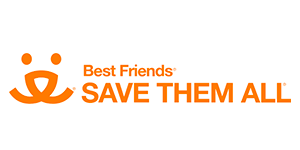Getting the Behavior you want from your Dog


Getting the Behavior You Want From Your Dog
By Sherry Woodard, Best Friends animal behavior consultant
All dogs benefit from learning how to behave appropriately when sharing space and time with their human family members and their other animal friends. Dogs aren’t born knowing how to interact politely with people, so you’ll need to teach your dog the basics using reward-based training techniques.
The basic cues every dog should know are:
Recall. Recall involves name recognition and getting your dog to come when called. Be aware of the tone of voice you use. We humans often use recall with an unhappy tone, and it also often means that whatever fun thing the dog is doing is about to stop. You want your dog to associate good things with running to you, so practice the following daily: Using a happy tone, call your dog and when she comes, reward her with a treat or a pet, and then let her go.
Sit. Dogs cannot jump up and sit at the same time, so teaching your dog to sit can eliminate jumping-up behavior. “Sit” is a great way for your dog to greet new people.
Down. Teach your dog to lie down all the way, with elbows on the floor. As with “sit,” the cue “down” can stop jumping-up behavior by replacing it. “Down” also helps to teach patience and self-control to your dog.
Stand. This cue is used for grooming, and inspecting lumps and bumps. You can use “wait” with a stand position.
Wait. The cues “wait” and “stay” also teach your dog patience and self-control. “Wait” involves a brief wait. In a sit, stand or down position, ask your dog to wait for food, wait to have a leash clipped on her collar, wait while you go in and out of doorways.
Stay. The “stay” cue is used for longer waiting periods. If you don’t want the dog to move, it’s best to ask her to stay in a down position, since other positions may become uncomfortable to hold. Teach “stay” on a bed or mat if you want the dog to stay in one place. Using a mat makes the place for the stay more comfortable, and the dog can clearly see, feel and relax in the designated space.
Make sure you use “stay” appropriately. For example, if you teach a dog to stay until released, but then start saying it as you leave for work every day, you will confuse your dog and lose the true use of “stay.”
Go to bed. You can make a game out of “go to bed.” Start by leading your dog to his bed and then rewarding him. Then, add the words once your dog is running to this place, expecting a treat, toy, praise or chewy.
Once you have taught your dog the basics, you can reinforce his learning throughout the daily routine. There are many opportunities to practice every day, without setting aside a specific time for training. Here are some examples:
- Ask your dog to sit before going outside and before coming back in.
- Use “down” before giving your dog a meal.
- Use “sit” before giving the dog a treat or toy, or before throwing a toy for a game of fetch.
- You can add “wait” or “stay” to any “sit” or “down.”
Ask your dog to sit, lie down, wait or stay in order to get access to anything the dog wants: a walk, a favorite game, toys, treats, social time with people and other animals. Remember to reward only when the dog is in the correct position.
Being consistent with this daily training and making it fun will allow you and your dog to develop a trusting, positive relationship. Your dog will see you as the best, most generous leader ever — and he’ll respond with great behavior in exchange for fun rewards.